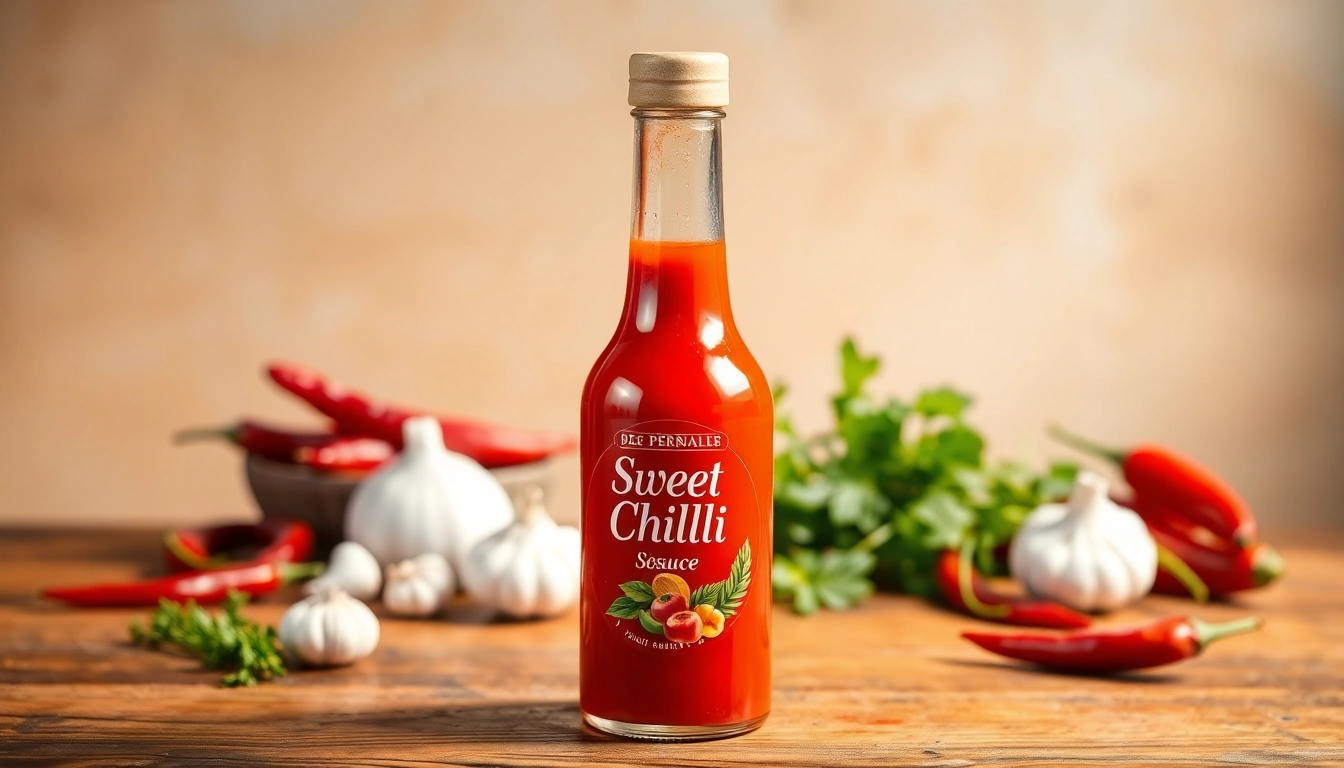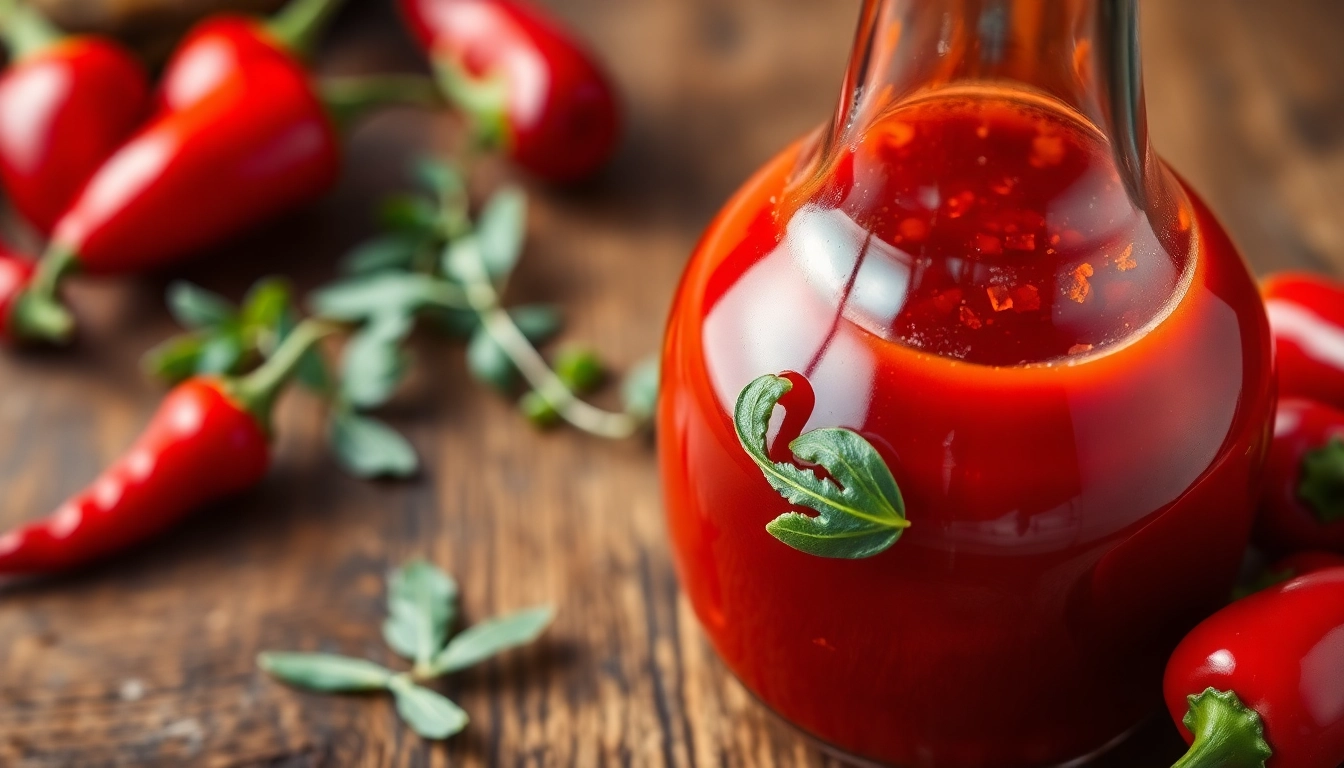Mastering the Art of Sweet Chilli Sauce Production to Boost Your Food Brand
In the dynamic world of food manufacturing, few condiments have achieved the widespread popularity and versatility of Sweet Chilli Sauce. Known for its perfect balance of sweetness, spice, and tang, this sauce not only enhances dishes across various cuisines but also serves as a key product for food entrepreneurs aiming to establish a strong market presence. For manufacturers, understanding the nuances of its ingredients, production processes, packaging strategies, and market dynamics is essential to create a product that stands out in a crowded marketplace. This comprehensive guide offers an in-depth exploration of every aspect involved in mastering sweet chilli sauce production, with insights derived from industry standards, innovations, and practical experience, especially from reputable manufacturers like Spice Nest.
Understanding the Key Ingredients and Flavor Profile of Sweet Chilli Sauce
Essential ingredients and sourcing quality raw materials
The foundation of a superior sweet chilli sauce lies in its carefully selected ingredients. High-quality red chili peppers form the core, providing the distinctive heat and color. Organically farmed or regionally sourced chilies ensure consistent spiciness and vibrant flavor. Alongside chilies, the sweetness is primarily derived from cane sugar or palm sugar, which needs sourcing from reliable suppliers to maintain uniformity in taste and consistency. Other staple ingredients include vinegar (preferably rice or apple cider vinegar for depth), garlic, salt, and sometimes fruit-based additives like mango or pineapple for unique flavor variations. Sourcing raw materials from certified suppliers guarantees food safety compliance and superior taste profiles, which are critical to meeting export standards and customer expectations.
Balancing sweetness, spice, and tang in the recipe
Creating a balanced sweet chilli sauce requires precise formulation and testing. The sweetness should complement the heat from the chili peppers rather than overpowering it. Typically, a ratio of 2:1 or 3:1 (sweetness to spiciness) achieves this harmony. The Tang component, introduced via vinegar, adds brightness and helps preserve the product. Temperature control during mixing and cooking is vital to allow the flavors to meld seamlessly. Conducting sensory evaluations across multiple batches helps refine the profile, ensuring the final product appeals to a broad audience, from traditional Indian palates to international consumers.
Common flavor variations for different markets
Market preferences influence flavor customization. For Western markets, a slightly milder spice and higher sweetness prevail, while Asian markets may prefer a hotter, tangier profile. Variations include adding ingredients like ginger, lemon juice, or sesame oil for regional nuances. Organic, gluten-free, and keto-friendly formulations are gaining traction, tapping into health-conscious demographics. Understanding consumer preferences through market research enables tailored formulations and innovative product lines, thus expanding the brand’s reach and relevance.
Manufacturing Processes and Quality Assurance for Sweet Chilli Sauce
Step-by-step production methods
Producing sweet chilli sauce involves a precise, multi-stage process that ensures consistency and safety. The process begins with ingredient preparation—cleaning, chopping, and grinding the chili peppers and other raw materials. The peppers are then cooked with vinegar, sugar, garlic, and optional flavor enhancers in large, temperature-controlled cooking vessels. Continuous stirring prevents burning and ensures uniform heat distribution. After achieving the desired consistency and flavor profile, the hot paste is poured into sterilized containers, cooled, and labeled. Modern manufacturers employ automation and computer-controlled cooking systems to standardize each batch, reducing variability and increasing throughput efficiency.
Maintaining consistency and hygiene standards
Consistency is critical for brand trust and customer loyalty. Rigorous standard operating procedures (SOPs) and quality control checkpoints are implemented at every stage—from raw material inspection to final packaging. Hygiene standards comply with Good Manufacturing Practices (GMP), including sanitized equipment, clean room environments, and trained personnel. Regular microbiological testing and ingredient verification prevent contamination and spoilage, ensuring a safe, high-quality product for consumers worldwide.
Certifications and compliance for export readiness
Exporting sweet chilli sauce requires adherence to international standards like ISO 9001 for quality management, HACCP for food safety, and organic or ecolabel certifications if applicable. Spice Nest, as a certified manufacturer, maintains certifications recognized globally, facilitating seamless export to markets with strict import regulations. Compliance with labeling norms, allergen declarations, and traceability protocols further support export readiness and enhance credibility in international trade fairs and distributor negotiations.
Packaging, Preservation, and Branding Strategies
Designing attractive and functional packaging
Packaging not only preserves the product but also communicates brand identity. Clear, vibrant labels highlighting key features such as organic certification, spice level, and flavor profile help attract consumers. Eco-friendly materials, recyclable plastics, and airtight seals extend shelf life and align with sustainability trends. Additionally, user-friendly designs like flip-top bottles, squeeze pouches, or glass jars improve convenience and consumer engagement.
Best practices for shelf life and preservation
Proper pH levels, pasteurization, and sterilization techniques ensure microbiological stability. Adding natural preservatives or employing modified atmosphere packaging (MAP) can extend shelf life while maintaining flavor quality. Conducting accelerated shelf-life tests allows manufacturers to predict product stability, optimize packaging, and develop accurate expiry dates, crucial for international markets with stringent storage regulations.
Building a strong brand identity with Sweet Chilli Sauce
Branding distinguishes your product in a competitive landscape. Consistent branding involves memorable logos, compelling stories, and quality assurance symbols. Leveraging certifications, endorsements, and positive consumer reviews cultivates trust. Engaging digital marketing, social media campaigns, and participation in trade shows like Biofach or Foodex enhances visibility, especially when showcasing innovative formulations or organic options tailored for health-conscious consumers.
Marketing and Distribution Channels for Sweet Chilli Sauce
Targeting local and international markets
Effective market segmentation involves understanding tastes and preferences across regions. For instance, targeting the Indian diaspora or Asian cuisine lovers in Western countries through ethnic stores and online platforms is vital. Collaborations with distributors, supermarkets, and foodservice providers enhance reach. Developing product variants to suit different markets—such as milder versions for European consumers or spicy adaptations for Southeast Asia—can maximize acceptance and sales grow.
Leveraging trade shows and online platforms
Participation in prominent food expos such as Biofach, Anuga, and Gulfood offers networking opportunities and brand exposure. Digital presence through e-commerce websites, B2B marketplaces, and social channels enables direct consumer access and wholesale inquiries. Enhanced product listing with detailed descriptions, certifications, and usage suggestions foster trust and facilitate purchasing decisions.
Effective promotional techniques to increase sales
Sampling campaigns, cooking demonstrations, and influencer collaborations create buzz around your sweet chilli sauce. Offering introductory discounts or bundle deals encourages trial. Educating consumers about the product’s versatility—how it enhances grilled meats, salads, or stir-fries—can boost household adoption. Gathering consumer feedback aids in refining formulations and marketing messages for future campaigns.
Emerging Trends and Innovations in Sweet Chilli Sauce Industry
Health-conscious formulations and organic options
As consumers become more health-aware, the demand for organic, low-sugar, and preservative-free variants rises. Incorporating superfoods like chia seeds or turmeric, and adopting organic certification standards positions brands as leaders in wellness-oriented food products. Transparency in sourcing and manufacturing processes builds consumer confidence and aligns with global organic standards.
Incorporation into diverse cuisines
Innovation involves blending traditional recipes with modern culinary trends. For example, infusing sweet chilli with smoky flavors, adding herbs, or creating fusion variants opens new markets. Educating consumers on how to integrate sweet chilli sauce into salads, wraps, or even desserts broadens application scope, fueling product demand and diversification.
Eco-friendly packaging and sustainable practices
Adopting biodegradable or recyclable packaging materials not only reduces environmental impact but also appeals to eco-conscious buyers. Implementing energy-efficient manufacturing techniques, waste minimization, and fair-trade sourcing contribute to a sustainable supply chain, further enhancing brand reputation and aligning with global sustainability goals.









